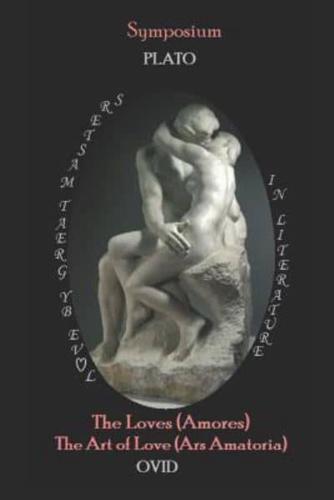Publisher's Synopsis
About the Series: LOVE by Great Masters in LiteratureVOLUME 1. Symposium by Plato / The Loves (Amores) & The Art of Love (Ars Amatoria) by Ovid (Illustrated by Jean De Bosschere)VOLUME 2. The Romance of Tristan & Iseult by Joseph Bédier / The Tragedy of Romeo & Juliet by William Shakespeare (Illustrated by John Gilbert)VOLUME 3. Pride and Prejudice by Jane Austen / Lady Chatterley's Lover by D. H. (David Herbert) LawrenceVOLUME 4. Brontë Sisters: Jane Eyre by Charlotte Brontë / Wuthering Heights by Emily BrontëVOLUME 5. The Lily of the Valley by Honoré De Balzac / The Charterhouse of Parma by Stendhal / Sentimental Education (Vol.1 & 2 - Illustrated) by Gustave FlaubertVOLUME.6. A Pair of Blue Eyes (Illustrated by James Abbott Pasquier) & Far From the Madding Crowd (Illustrated by Helen Paterson Allingham) by Thomas Hardy .VOLUME 7. Aphrodite: Ancient Manners (Illustrated by Ed Zier) & The Songs of Bilitis (Illustrated by Willy Pogany) by Pierre LouÿsVOLUME 8. The Kama Sutra of Vatsyayana (Illustrated).The Symposium (Ancient Greek: Συμπόσιον, Sympósion [sympósi?on]) is a philosophical text by Plato dated c. 385-370 BC. It depicts a friendly contest of extemporaneous speeches given by a group of notable men attending a banquet. The men include the philosopher Socrates, the general and political figure Alcibiades, and the comic playwright Aristophanes. The speeches are to be given in praise of Eros, who is the god of love and desire, and the son of Aphrodite. In the Symposium, Eros is recognized both as erotic love, and as a phenomenon that is capable of inspiring courage, valor, great deeds and works, and vanquishing man's natural fear of death. It is seen as transcending its earthly origins, and attaining spiritual heights. This extraordinary elevation of the concept of love raises a question of whether some of the most extreme extents of meaning might be intended as humor or farce. Eros is almost always translated as "love," and the English word has its own varieties and ambiguities that provide additional challenges to the effort to understand the Eros of ancient Athens.The host has challenged the men to deliver, each in turn, an encomium - a speech in praise of Love (Eros). The party takes place at the house of the tragedian Agathon in Athens. This dialogue is one of Plato's major works; it is appreciated for its philosophical content and literary quality.The Amores is a collection in three books of love poetry in elegiac meter, following the conventions of the elegiac genre developed by Tibullus and Propertius. Elegy originates with Propertius and Tibullus; however, Ovid is an innovator in the genre. Ovid changes the leader of his elegies from the poet, to Amor (love). This switch in focus from the triumphs of the poet, to the triumphs of love over people is the first of its kind for this genre of poetry. This Ovidian innovation can be summarized as the use of love as a metaphor for poetry.The books describe the many aspects of love and focus on the poet's relationship with a mistress called Corinna. Within the various poems, several describe events in the relationship, thus presenting the reader with some vignettes and a loose narrative.The Art of Love is (Ars amatoria) an instructional elegy series in three books by the ancient Roman poet Ovid. It was written in 2 CE.










